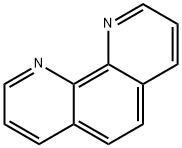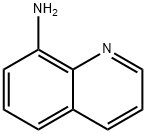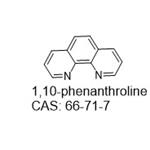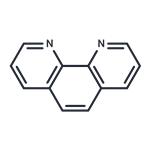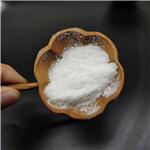Description
o-Phenanthroline is a white crystalline powder and serves as an organic intermediate. It has multiple uses, acting as both a redox indicator and a reagent for the determination of various metals such as ferrous, palladium, vanadium, copper, and iron.
Chemical Properties
Monohydrate is a white crystalline powder. The melting point is 93-94°C, the melting point of anhydrous is 117°C, soluble in 300 parts of water, 70 parts of benzene, soluble in alcohol and acetone.
Characteristics
o-Phenanthroline can form complexes with a variety of transition metals. Since the complexes formed are chelates, they are relatively stable. The complexes and their derivatives formed with copper can be used as non-oxidative nucleic acid cleaving enzymes because they have certain cleavage activity on DNA, and further have certain anticancer activities.
Uses
o-Phenanthroline is a commonly used redox indicator and also a bidentate ligand. It has been widely used in transition metal-catalyzed cross-coupling reactions and C?H bond activation reactions. It also acts as a chelating agent, forming complexes with most metal ions. In addition, it functions as a ligand employed in the spectrophotometric determination of metals and photocatalytic reduction of carbon dioxide.
Uses
As an analytical reagent for determination of metals in chemical and biological systems through complex formation. As an indicator ("Ferroin") in combination with ferrous ions for oxidation/reduction reactions. In organic syntheses as an activator.
Preparation
1,10-Phenanthroline is prepared by heating o-phenylenediamine, glycerin, nitrobenzene and concentrated sulfuric acid.
Definition
ChEBI: 1,10-phenanthroline is a phenanthroline. It has a role as an EC 3.4.19.3 (pyroglutamyl-peptidase I) inhibitor and an EC 2.7.1.1 (hexokinase) inhibitor.
Safety Profile
Poison by ingestion and intraperitoneal routes. An experimental teratogen. Mutation data reported. When heated to decomposition it emits toxic fumes of NOx.
in vitro
proteolysis of lamins, which are the intermediate filament proteins providing support to the nuclear structural proteins and are targets of mmp-2, o-phenanthroline abolished the proteolysis of lamin a [2].
Purification Methods
Purify it via the HgCl2 addition compound formed when phenanthridine (20g) in 1:1 HCl (100mL) is added to aqueous HgCl2 (60g in 3L), and the mixture is heated to boiling. The HgCl2 complex separates as yellow red crystals with m 195-198o [Arcus & Mesley J Chem Soc 1780 1953]. Conc HCl is then added until all of the solid has dissolved. The compound separates on cooling and is decomposed with aqueous NaOH (ca 5M). Phenanthridine is extracted into Et2O, evaporated, and the residue is crystallised from pet ether (b 80-100o) or EtOAc. [Cumper et al. J Chem Soc 45218 1962.] It is also purified by chromatography on activated alumina from *benzene solution, with diethyl ether as eluent. Evaporation of ether gives crystalline material which is freed from residual solvent under vacuum, then further purified by fractional crystallisation, under N2, from its melt. It was purified by zone melting and sublimes in a vacuum. The picrate has m 218.5-219.5o (from iso-PrOH) (also reported are m 244-245o and 247-248o, from EtOH or H2O). [Slough & Ubbelhode J Chem Soc 911 1957.] [Beilstein 20 H 466, 20 III/IV 4016, 20/8 V 223.]
